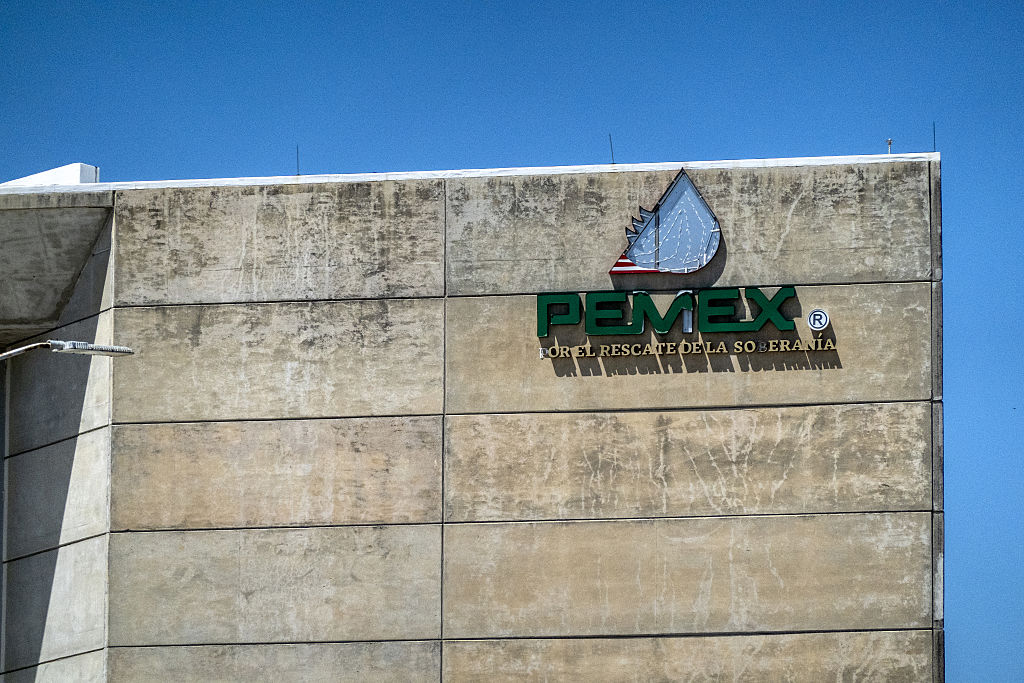Days ago, Mexico’s government announced a deal to support the deteriorating finances of the state-owned oil company, Petróleos Mexicanos SA (Pemex). By issuing instruments called pre-capitalized notes, the Sheinbaum administration hopes to stabilize the financial performance of a company that has been reporting losses for at least the last 10 years. However, Pemex is besieged not only by mounting financial liabilities but also by a series of issues that compromise its future and, to some extent, its current operations.
In June, the U.S. International Energy Agency (IEA) released its Oil 2025 report, projecting that Mexico could become a net oil importer by 2030. The forecast results from a consistent decline in production, underinvestment, and mounting debt.
The company has recently experienced sweeping legal and constitutional changes, which increased government control while reversing key elements from the 2013 energy reform, including opening the sector to private investment.
Pemex’s current situation is best understood in the context of how national oil companies (NOCs) operate. Scholars like Terry L. Karl and Michael Ross have described crude revenues as rents, or an extraordinary income tied to resource scarcity. While lucrative, this money often creates economic distortions, where reliance on volatile oil exports undermines long-term macroeconomic stability.
The issue lies not in the oil itself, but in those in charge of oil-rich countries. As Venezuela’s experience shows, oil money tends to promote a vicious cycle that weakens public institutions and erodes the rule of law and fiscal transparency. These dynamics lead to what economists Daron Acemoglu and James A. Robinson call extractive institutions, or systems that concentrate power and suppress broad-based prosperity and democracy.
To avoid this path, governments can opt for sovereign wealth funds to manage oil profits transparently. They can also protect national oil companies from political interference by establishing governance frameworks that preserve technical autonomy but allow governments to set policy direction. This includes rules for independent oversight, competitive contracting to lure private investment, and alignment with environmental, social and governance (ESG) standards. Regulatory agencies play a critical role in ensuring legal certainty and investor confidence.
Once institutional erosion begins, recovery becomes difficult. The collapse of Petróleos de Venezuela, PDVSA, offers a cautionary tale: Its decline, driven by political meddling, mismanagement and debt, began long before U.S. sanctions in 2019. If Pemex continues on its current path, it may risk a similar fate.
Weaker production and ballooning debt
In 2015, Mexico’s oil output stood at 2.27 million bpd. In May of this year, production had declined to 1.64 million bpd, a 28% contraction over nearly a decade. Exports are no different: According to daily El Financiero, as of May, the value of crude exports dropped 43% year-on-year.
The key issue dragging Pemex is its $101 billion debt pile, making it the world’s most indebted oil company. Approximately 22% of that amount is owed to Pemex suppliers. Despite public commitments to settle these obligations, payments have yet to fully materialize. Earlier this month, contractors threatened to halt operations if unpaid balances continued to grow. Some suppliers have faced debt and problems in meeting tax obligations due to payment delays from Pemex.
Governments often prioritize repaying financial debt over commercial obligations, but this strategy has risks. In Venezuela, deferring supplier payments led to a sharp decline in operational capacity. Something similar may be unfolding in Mexico.
Mexico’s ongoing support for its oil company, including tax breaks, has backfired. Credit ratings company Fitch recently warned that Pemex’s financial troubles are now affecting the country’s sovereign credit outlook. It remains unclear whether the pre-capitalized notes announced by the government will effectively reduce commercial debt.
This dire situation helps understand the IEA’s warning. If this trend continues, Mexico will need to import at least 500,000 bpd by 2030 to meet domestic demand.
From productive company to state-owned enterprise
Mexico’s 2013 energy reform aimed to modernize Pemex by redefining it as a “productive company of the state.” The new model prioritized efficiency and profitability, with governance rules protected at a constitutional level to provide long-term stability. Half of Pemex’s board was composed of independent directors (Article 15 of the 2013 Law), although they were appointed by the president. The reform also introduced new oil contracts to attract private capital and expertise, a measure highlighted by institutions like the Inter-American Development Bank.
But this framework was short-lived. In 2024, President Sheinbaum pushed for a constitutional reform to reclassify Pemex as a state-owned enterprise, expanding direct government control. A secondary legislative package, passed in March, consolidated this shift: Only three out of eight board members remain independent, and the types of oil contracts allowed were limited to a model known as mixed contracts. Although the details have not been defined yet, these contracts are similar to oil services agreements, allowing private investors to engage in oil activities and share part of the production with the government. Pemex’s board recently approved guidelines for implementing these new contracts. If executed, they could add 66,000 barrels per day by the end of the year. But attracting private partners is no easy feat. Contracts must balance government interests with investor incentives, legal protections, and regulatory clarity, particularly in a high-risk operating environment.
Can Pemex avoid PDVSA’s fate?
PDVSA’s collapse offers four key lessons that Pemex should consider.
First, national oil companies can, and do, fall. Many assumed Venezuela’s status as a petrostate would shield it from structural decline. It didn’t. Today, PDVSA’s output remains weak and recovery will take years. Pemex should not assume immunity.
Second, creditor patience has limits. When PDVSA began collapsing in 2014, Venezuela assumed bondholders would wait indefinitely. Litigation against the company began the following year, sparking a flood of lawsuits that threatened PDVSA’s global assets. Pemex could soon face similar pressures, with maturities of $18.7 billion in 2026.
Third, private investment is essential. PDVSA’s modest recovery since 2020 came largely through partnerships under a revamped contract model. However, without institutional safeguards, these contracts had limited impact. Pemex must attract private capital, but it also needs to ensure contract stability and investor protections. Relying on government bailout efforts—such as the announced pre-capitalized notes—is clearly insufficient.
Fourth, government safeguards determine sector performance. Property rights, dispute resolution mechanisms, tax terms and contract flexibility all shape investment decisions. Leveraging these by designing contracts that offer clear protections and adaptable terms could help stabilize production.
A path forward
The key short-term strategy for Pemex is to effectively deploy the new mixed contracts. These can help reverse the production decline if they are designed with transparency and offer investor incentives. Over time, deeper reforms will be needed to improve the company’s internal governance, technical efficiency, and financial health.
Longer-term reforms should focus on rebalancing government oversight with operational autonomy. Reinforcing Pemex’s independent board representation, establishing debt repayment plans that prioritize operations, and rebuilding trust with suppliers are essential first steps. Similarly, strengthening regulatory agencies and judicial predictability would help shore up investor confidence.
External challenges remain, such as U.S. tariff threats and geopolitical instability in oil markets, but Mexico retains control over many of the variables that matter most. The new mixed contracts provide a narrow but viable opportunity to shift course.
If Pemex can navigate these reforms effectively, the IEA’s projection may yet be avoided. But with 2030 fast approaching, the window to act is closing.






